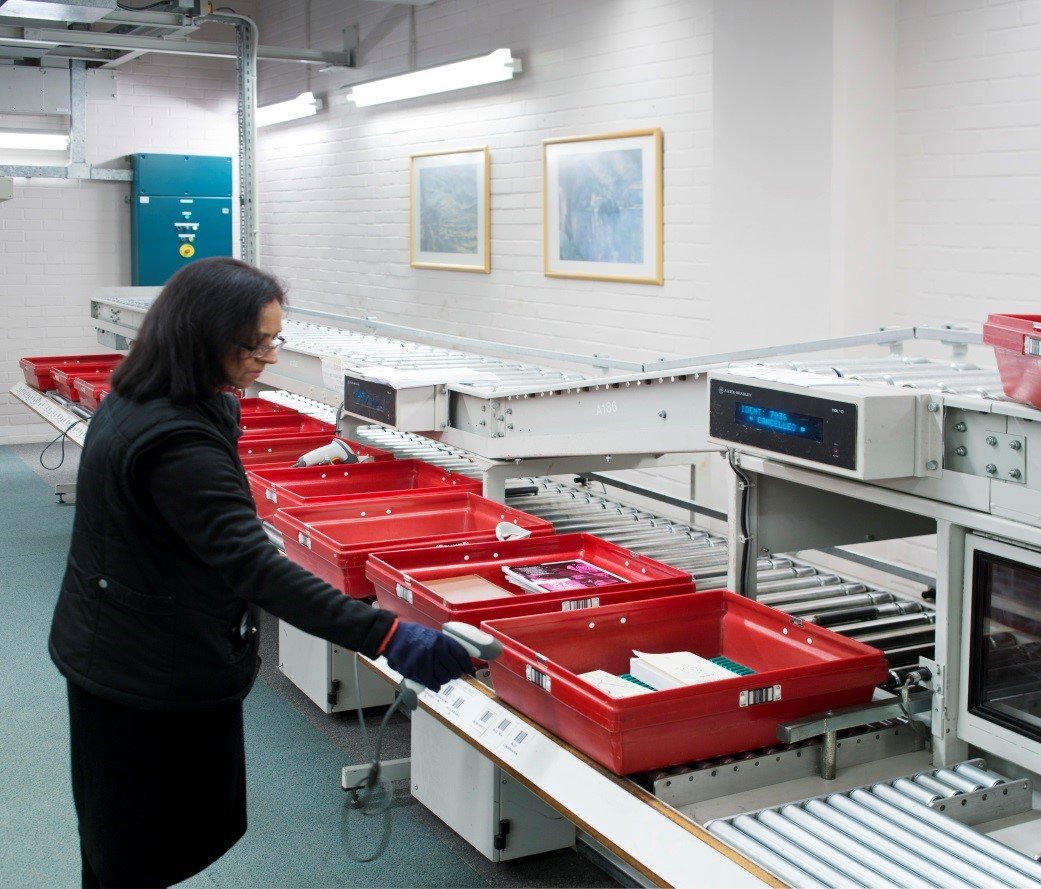
By Danielle Stallard, HSE Recruitment Network
The British Library recently opened its illustrious doors to The HSE Recruitment Network and as home to the largest catalogued library collection in the world, it did not disappoint.
As a standard visitor to The British Library at St. Pancras, it would be easy to see an expansive educational site with a flair for attracting tourists – a nice café area and restaurant, frequent exhibitions and events (at present, The British Library’s exhibition celebrates the 40th anniversary of the unique punk music phenomenon). As the UK’s largest public building constructed in the 20th century, there is a sudden realisation while on a site tour that you should firstly be wearing comfortable shoes and secondly, be prepared to get rather lost. With over fourteen floors, five of which are below ground, you can only begin to grasp the sheer volume of the catalogue – copies of every publication produced in the UK and Ireland taking up just part of the collection with an additional 3 million new times added each year. The British Library also offers access to sound archives, digital items, stamp collections, manuscripts and maps – offering far more than just a few dusty bookshelves. To highlight the extremity of the items stored: if you were to see five items a day, it would take more than 80,000 years to see the entire collection.
Wandering through the vast building and exploring the many different rooms and floors, you can easily fail to notice the unique and interesting features within a building as unassuming as a library. So where does the element of ‘risk’ come into it? Trust me, it’s not just paper cuts.
The British Library is fortunate enough to have an established Integrated Risk Management Team, led by Peter Brooks and it has teams that are not only passionate about health and safety, and security but also they care greatly for the preservation of the treasured and irreplaceable collections on site.
Heading up the health and safety team is Nicola Deal, supported by Hannah Clark at St. Pancras and Martin Rocks at Boston Spa. They are the health and safety experts at the library and between them have many years’ experience behind them and cover the three sites that the British Library has.. The HSE Recruitment Network were fortunate enough to be joined on the site tour by both Hannah and Nicola, and introduced to some of the Trade Union Health and Safety representatives. Both are part of an evidently established and knowledgeable team who provided an inimitable tour of not only The British Library but also a clear representation of the complex risk profile and preventative procedures in place.
If you were asked to describe the risk profile at The British Library, or in fact any similar public building, it is likely you would struggle to identify anything considered a particular ‘risk’. By no means would you be scolded for making this assumption – walking into the library doesn’t exactly require you to throw on your hard hat or PPE. However, what you don’t realise is the existence of very real risks and the extensive measures to which the team have gone to, to ensure the site is both compliant and safe for its many visitors and employees.
It would be easy to assume the focus is very much on public safety in a location such as the British Library, with an annual footfall in excess of 1.6 million. Admittedly, the majority of incidents are indeed a result of visitor slips, trips and falls along with instances around manual handling. However, while the former have been mitigated by measures such as public signage, the latter has been managed in a most innovative and effective way within the library – the use of a Mechanical Book Handling System.

The system operates throughout The British Library’s St Pancras site, quietly whirring away behind the walls and beneath the ground within the 24.5 metre depth of the basement. The system transports requested items from the collection to designated areas within the library, reducing the need to manually move vast numbers of books and other weighty items throughout the multi-storey building. There is a state of the art automated system in the newly build designated storage buildings at their site at Boston Spa, Yorkshire which is home to The National Newspaper Building. This site features large collection storage areas which feeds customer demand from all over the world, reading rooms and office areas.. Follow the link below see how the intricate system works – from the point of view of the book:
Within the St Pancras site the collection storage facilities have been purpose-built to provide the ideal conditions to store fragile items – maintaining constant temperature and humidity in a low-lit environment. The National Newspaper Building at Boston Spa is the second building that has a reduced oxygen environment for the collections to eliminate the risk of fire.
The tall glass tower which stands in the very centre of the British Library is the King’s Library Tower. The tower contains the book collection of King George III and was collected during the period known as The Age of Enlightenment. The thousands of precious books from his collection are exhibited in such a way as during this time, scholars liked to display their knowledge through the collection of items in cabinets. We were fortunate enough to be given a tour inside of the eminent tower.

The tower has specific conditions in order to preserve and maintain the collection. While care of the books is vital, the wellbeing of employees is also a top priority to The British Library and this is a key issue when working inside The Kings Library.
With a great deal of flammable items on site, the main health and safety concern is the risk of fire and this is particularly important in a closed off area such as the tower. There is little room inside, with the heavy bookcases on large rolling stacks which presents a risk all on their own. With a small lift to access the multiple floors, options were limited for a fire exit should the unimaginable occur inside the tower. A trap door has been installed on the top floor, giving any employees inside the tower an exit in the case of an emergency – but there’s a catch.
The door opens overhead and is particularly heavy (as I experienced first-hand) so the Health and Safety Team have implemented a rule: you are tested before being able to work inside the tower and must be able to open the door unassisted.
If a fire were to occur on site, it could be catastrophic and would not only put a great number of people at risk but would lead to irreparable damage to historic, one of a kind items. For this reason, preventative fire procedures are in place in every single area of the building and are expertly monitored by the security team. With highly advanced camera and sensory systems throughout public areas of the library, the expert security professionals are required to not only monitor public safety and behaviour but also monitor for potential fires and hazards. Should the security team identify a potential fire, they are required to reach the location of the risk within a specific (and very short) timeframe.
Similar control measures can be found in The Basement, such as temperature and lighting conditions, compression systems and additional ‘rules’ for employees. This applies again, to the fire safety policy – in the event of a fire, the lift will be out of service (fairly standard procedure). With five floors below ground it is of grave importance that those working in the basement are physically able to make the journey up the multiple flights of stairs – if an employee is unable to do so, they are not able to work below ground. While implementing these stipulations can potentially put organisations at risk for discrimination cases, in this environment it is of far greater importance to ensure the safety of their employees and enforcing such ‘rules’ is the way to do so.

The Health and Safety team at The British Library have successfully implemented robust and effective control measures in order to tackle common risks, in an unusual and innovative way many of the visitors that walk through their doors will sadly overlook this, unaware of the protective work going on around them – if nothing else, this is a credit to The British Library and the peaceful, safe environment they have created.
Further information: http://www.bl.uk/
Photo credits
The Safety Conversation Podcast: Listen now!
The Safety Conversation with SHP (previously the Safety and Health Podcast) aims to bring you the latest news, insights and legislation updates in the form of interviews, discussions and panel debates from leading figures within the profession.
Find us on Apple Podcasts, Spotify and Google Podcasts, subscribe and join the conversation today!





